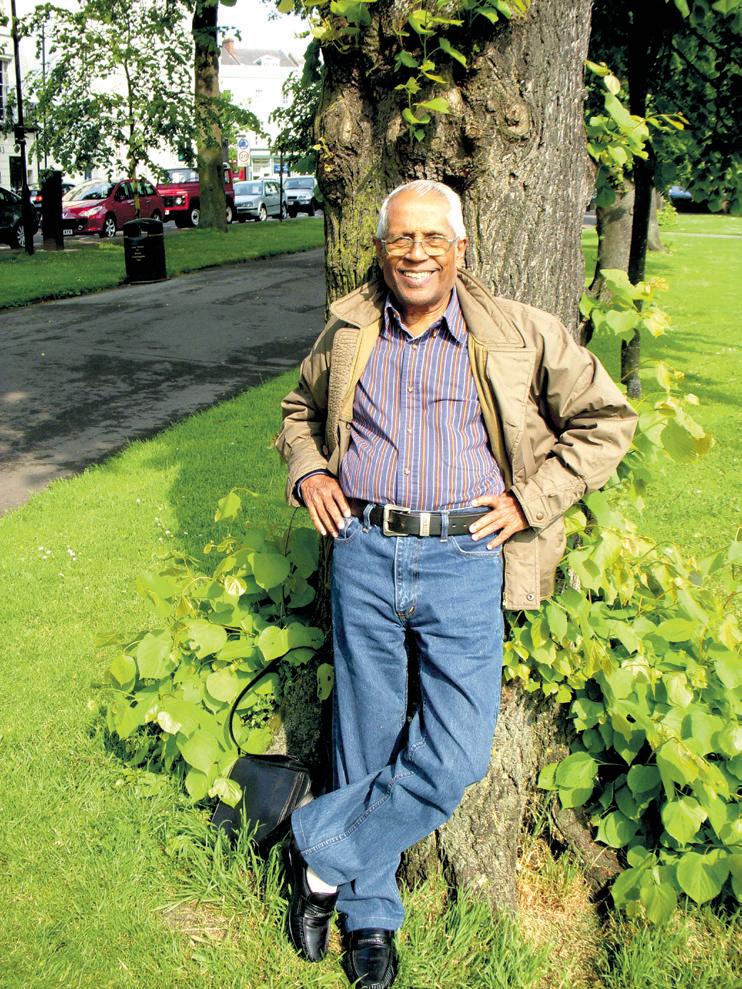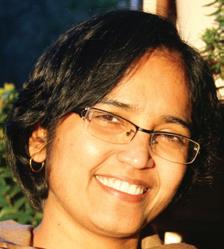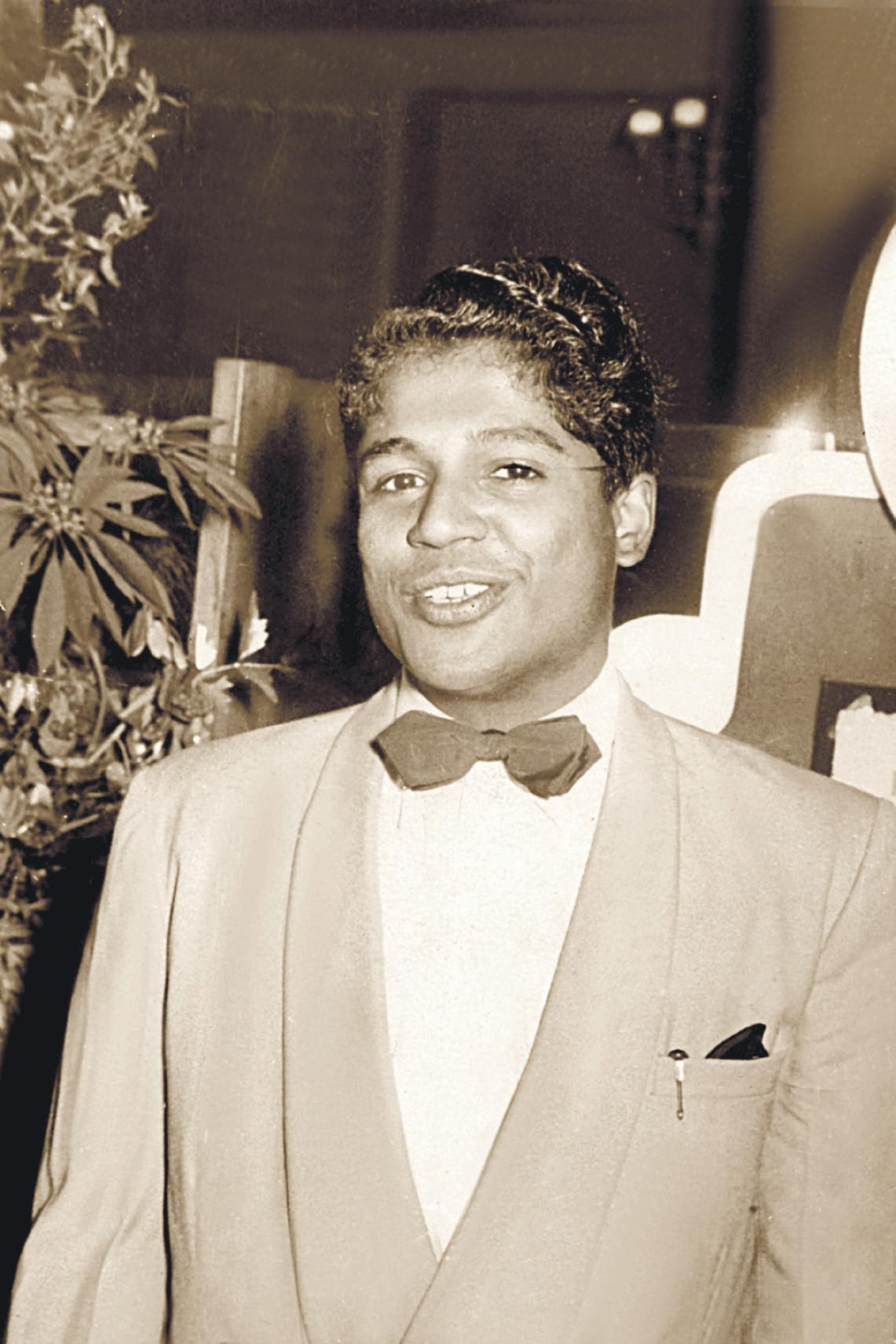
10 minute read
Australia’s earliest international student
from 2012-12 Sydney (1)
by Indian Link
An octogenarian UNSW alumni returns to Sydney and shares his experiences of life as a student
BY JYOTI SHANKAR
Sixty years ago when I boarded a BOAC Skymaster flight for Sydney I had my one newly-tailored blue suit in my bag and very little idea of Australia, beyond an excited sense of optimism for what the future might hold. I’d never before left Sri Lanka (then Ceylon) and, of course, I’d never been on a plane. I had grown up in a rural village where we took the buggy cart to school. And I hadn’t had much time to get used to the idea either. When the telegram delivery boy tracked me down on his bicycle at a tennis court in Colombo in 1952, I tore the envelope open to discover my application for one of the very first Australian university scholarships for Asian students had been successful and that I’d be leaving for five years within a fortnight.”
This is 82-year-old Tennyson Rodrigo reminiscing about his journey to Australia as one of this country’s earliest international students, who came here under the ‘Colombo Plan’. He returned to Sydney last month on a special invite to attend a gala dinner at his alma mater, the University of New South Wales. UNSW itself has come a long way from the makeshift corrugated-iron classrooms of Tennyson’s days, to one of Australia’s premier educational institutions with state-of-the-art buildings and programs. The Colombo Plan, under whose aegis Tennyson came to Sydney, has since brought over 20,000 students into the country, changing their lives forever and making a substantial impact both locally and in their home countries.

NSW Premier Barry O’Farrell delivered the keynote address on international education at the 60-year reunion on November 22 to an audience that included Colombo Plan alumni dating back to the first year of the scheme in 1952. Tennyson was the only person they could trace back from that year.
In the fifties, after the Second World War ended, countries were coming out of their colonial shackles and trying to rebuild their economies. The White Australia policy was slowly being dismantled. Australia wanted to move ahead, change perceptions and engage in a meaningful South-South cooperation. At the Commonwealth Conference of Foreign Ministers held in Colombo in January 1950, the Colombo Plan was formulated to strengthen the economic and social development of the countries in the region, and promote the transfer and sharing of technology and developmental experiences. Original signatories to the Plan were Australia, Canada, Ceylon, India, New Zealand, Pakistan, United Kingdom, Malaya and North Borneo, but later the membership expanded to 25 countries.
Tennyson won one of the first Colombo Plan scholarships to study chemical engineering, and at 22, found himself bound for Sydney. Everything was new and different. Milkshakes and baked beans on toast soon became part of his diet. He soon discovered that his tailored suit with its huge lapels wasn’t quite right, so he saved up his allowance to buy a blue pin-striped suit from Gowings which helped him sail through the next five years.
“There were plenty of other new arrivals on campus, mostly Europeans in the first wave of post-war migration, but I did not encounter racism,” recalls Tennyson. “Some looked at me strangely but not with hostility, often displaying a genuine curiosity about Asian cultures”. Brown-skinned people were rare those days and Tennyson soon became a mini celebrity with his musical talents on the sitar, violin and tabla. The Sydney Morning Herald ran a front-page picture of him attending a ball. He was invited by ABC Radio to play the sitar and featured on the cover of ABC Weekly. The Indian High Commissioner, KC Sengupta’s wife Manjula was accomplished in Rabindra Sangeet and Tennyson was often called upon to accompany her with his instruments.
His association with the Indian community was strong during his stay in Sydney, and he fondly recalls the staging of the Tagore dance drama Chitrangadha with a cast of Australian, Sri Lankan and Indian students. They lived at the International Friendship Centre at Drummoyne, which became a little microcosm of cultures. have gone on to occupy important positions in their countries and have done their bit to promote a mutual understanding of cultures, thus becoming de-facto ambassadors for Australia. Past Colombo Plan scholars include Baburam Bhattarai, the current Prime Minister of Nepal; M. J Perera, the first Director General of Radio Ceylon, the oldest radio station of South Asia; and Khaw Boon Wan, the current Minister for National Development in Singapore. When asked if he ever thought of migrating to Australia, Tennyson replies that he never considered this move. The Sri Lankan government had him sign a bond that was assured by a family friend, to ensure his return after completion of his 5-year study. That was not what took him back, but a sense of responsibility for nation building. He returned to a job as ‘temporary assistant engineer’ in Ceylon’s public service on a salary equivalent to $2 a month, but rose through the ranks to set up and manage two of Sri Lanka’s largest industrial projects: its first oil refinery and its first nitrogenous fertiliser plant. Later Tennyson took up senior positions in banking, consulting and industry. He has continued to live in Colombo with his wife to this day, occasionally visiting his old friends in Australia and India.
“The mix of Chinese, Malay, Indian, Pakistani, Nepali, Filipino, Indonesian, Fijian, Papuan and other students, as well as their different religions, was itself unusual in Australia,” says Tennyson.
He is now pleased to see how multiculturalism is such an integral part of Australian society these days. When leaving, he was presented with a book about Kangra Valley paintings of India by the then Secretary of the Indian Association as a parting gift, and he cherishes the book even today.



Lately, with the release of the Asian Century white paper, there has been much talk about reviving the plan with Australian students studying in Asian countries as well, and that is not a bad idea as the equation has now changed. Developing countries have a lot to offer too, and a mutually symbiotic relationship would go a long way to promote world peace and development. Tennyson says, “I have always thought of myself as lucky, rather than especially talented. I felt that good fortune when that telegram arrived. Neither of my parents had been to university, so I was the first. My father was a good man, but rather taciturn. However, on that day I could see the pride in his eyes.”
He is happy that Australia has moved away from its insular ‘White Australia’ outlook since.
Manuscript of 212-year-old dictionary of Indian languages found
The manuscript of a 212-year-old dictionary written by a British polymath employed by the East India Company in the late 18th century has been traced in the British Library in London, shedding new light on the history of words in Indian languages.
The dictionary, titled Comparative Vocabularies, was written in 1800 by Dr Francis BuchananHamilton (1762-1929), who was a surgeon to the governor-general Lord Wellesley in Calcutta (now Kolkata). The manuscript traced in the British Library by Rini Kakati, the London-based director of FASS (Friends of Assam and the Seven Sisters), is a dictionary of 10 languages, including Assamese, Bengali, Manipuri, Garo, Rabha Koch, Kachari, Panikoch and Mech.
Kakati revealed that she was alerted about the manuscript by Raktim Ranjan Saikia of the Department of Geology in JB College, Jorhat, on behalf of Asom Jatiya Prakash, publisher of the dictionary. She said she was delighted to be able to trace the historic collection.
The book has 155 pages of landscape-sized paper. There are 18,000 words in all with 1,800 words in each of the 10 languages.
A Scottish physician, Buchanan-Hamilton is recognised for making significant contributions as a geographer, zoologist, and botanist while living in India. The standard botanical author abbreviation ‘Buch.-Ham.’ is applied to plants and animals he described.
In 1794, he was appointed a surgeon with the East India Company, and explore Burma, Chittagong (1798), the Andaman Islands, Nepal (1802-3) and North Bengal and Bihar (1807-9), when he made detailed surveys of the botany, geography, agriculture, economy, social conditions and culture of these areas, preparing extensive reports which now form an important historical resource.
On the return of the mission, being stationed at Jjakkipur, near the mouth of the Brahmaputra, he wrote a description of the fishes of that river, which was published in 1822.
First Sikh to guard Buckingham Palace - and in turban
An Indian-origin Sikh is all set to be the first person guarding the Buckingham Palace in his turban after being given the privilege not to wear the mandatory bearskin on ceremonial duties.
Guardsman Jatinderpal Singh Bhullar, 25, who joined the Scots Guards this year, has been given permission to wear a turban when on guard duty outside Buckingham Palace in London, breaking hundreds of years of tradition, Daily Mail reported recently.
The regiment traces its origin back to 1642 and its soldiers have worn bearskins on parade since 1832.
Bhullar is based at Wellington Barracks in Birdcage Walk. The base is used by soldiers from the Scots Guards’ F Company, who are responsible for public duties and guarding the Queen.
According to military sources, Bhullar, from Birmingham, is expected to parade for the first time next week. When he marches with his colleagues he will become the first guardsman not to wear a bearskin headgear.
As a devout Sikh, it is mandatory for Bhullar to wear a turban. It is intended to protect his hair, which he never cuts, and to keep it clean.
For centuries, Sikhs have worn turbans in battle and fought as part of the British Armyincluding Bhullar’s grandfather, who served in World War II.
The step, however, has irked some serving non-commissioned officers based at Wellington Barracks, who are furious that the Ministry of Defence (MoD) compromised centuries of history for one soldier.
Traditionalists in the Scots Guards say the allowances made for Bhullar will make the whole company look ridiculous to tourists and onlookers.
“It should be regiment first, then religion,” they have claimed.
Bhullar is one of only 20 to 25 British-born Sikhs in the British Army.
An MoD spokeswoman said: “The Army takes great pride in its diversity. Discussions are underway between this unit, the Sikh community and the MoD. The individual will have the full support of the Army and his colleagues.”
Kerala grants NRKs vote in local body polls
The Oommen Chandy government at its weekly cabinet meeting in Thiruvananthapuram in end November decided to allow the nearly two million non-resident Keralites (NRKs) the right to vote in the local body elections, a Kerala minister said.
State Minister in charge of the Diaspora K.C. Joseph said the cabinet decided to enact a new provision in the Kerala Panchayati Raj and Kerala Municipalities Act, which would enable the diaspora to vote in local body elections.
“Just as the NRIs got their names included in the voters’ lists by making amendments in the Representation of People Act, 1950, giving them rights to vote in assembly and Lok Sabha elections, we decided to include a new section in the Kerala Panchayati Raj and the Kerala Municipalities Act, which will enable our diaspora to cast votes whenever there is a local body poll,” Joseph said.
The enactment of the new provision is expected to be made during the forthcoming assembly session that begins Dec 10.
“This demand from the Kerala diaspora has been a long-standing one; never before were their names included in the voters’ lists, so there is no record of these people. With this move, these people will now find their names in voters’ lists,” Joseph said.
The local bodies’ elections, held once in five years, are next scheduled for 2015.
In the April 2011 state assembly polls, all NRKs whose names figured in the electoral list and who were present in the state during the elections were allowed to cast their votes for the first time.
French government, ArcelorMittal reach $234 mn deal
The clash between the Indian-origin steel giant Lakshmi Mittal-run ArcelorMittal and the French government ended recently after the former agreed to drop plans for 650 redundancies at site.
ArcelorMittal, the world’s largest steel company, agreed to invest 180 million euros ($234 million) over five years and cancel plans for 650 redundancies at its steelworks in Florange in the eastern region of Lorraine, The Independent reported recently.
In return, Paris abandoned a threat to nationalise the factory and re-sell it to a private buyer, it added.
The showdown had become symbolic of President François Hollande’s determination to reverse the erosion of France’s industrial base. The government was forced to accept, however, that two shuttered blast furnaces would not reopen immediately.
Instead, ArcelorMittal, controlled by Britishbased billionaire Mittal, will develop other profitable activities at the site such as the production of steel plate for the German car industry.
Three hours before the deadline for a deal, Prime Minister Jean-Marc Ayrault said a compromise had been reached.
Jobs would be preserved, he said, by a “programme of investment” in cold steel activities.
The blast furnaces, which produce “raw” or hot steel, would not reopen but be mothballed until they could be converted to possible experimental use in environment-friendly steel-making.
There would be no compulsory redundancies, Ayrault said.
In return for the “unconditional promises” by ArcelorMittal, he said, Paris dropped its threat to nationalise the complex and sell it within a matter of months for 400 million euros to an undisclosed potential buyer.
Internationally, the nationalisation threat cause a stir, with London Mayor Boris Johnson mocking France for returning to the statist 1970s or even the revolutionary 1790s.
Efforts on to seek release of Andhra
couple in Norway
Indian authorities are making efforts to seek release of a couple from Andhra Pradesh who has been arrested in Norway for chiding their son.
According to their family, an officer of the Indian embassy met Chandrashekar Vallabhaneni, who is in police custody, in Oslo on Nov 30 and assured him full assistance. According to sources, the officer collected all the details of the case and spoke to Chandrashekhar, an employee of software giant Tata Consultancy Services (TCS).
Chandrashekhar and his wife Anupama were arrested by police on 26 Nov but their family in Hyderabad only learnt of this on 29 Nov.
The arrest was made nine months after their seven-year-old child Sriram complained to his school teachers that his parents were threatening to send him back to India for wetting his pants.
Originally hailing from Krishna district in coastal Andhra, Chandrasekhar was sent to Oslo by his company last year to handle a project. The family returned home in July this year.
Chandrasekhar again left for Norway on Nov 23 for work. This time he went only with his wife leaving behind both sons. A court in Oslo issued summons and later police arrested them.
Chandrasekhar’s parents and other family members are worried about the couple. They appealed to the state and the central governments to intervene to seek their release. According to the child welfare authorities took Sriram for a month, but later returned him to his parents.
Andhra Pradesh Chief Minister N. Kiran Kumar Reddy directed Chief Secretary Minni Mathew to get in touch with the officials of the ministry of external affairs to seek the release of the couple.











